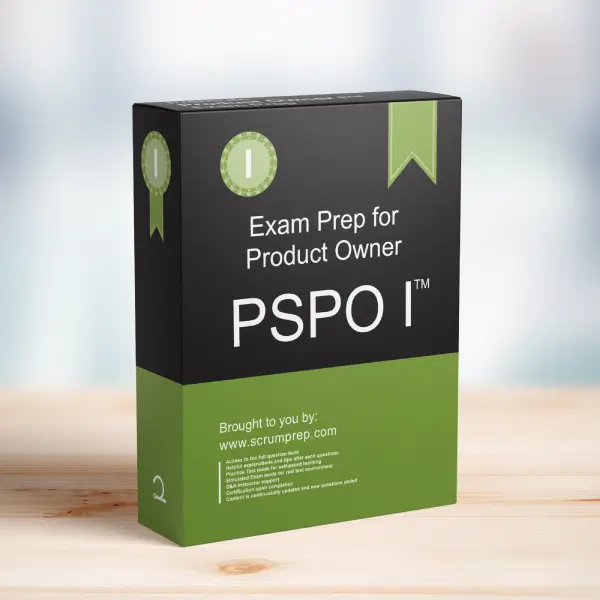Determining the Size of a “Ready” Product Backlog Item
In Scrum, ensuring that Product Backlog items are “ready” for a Sprint is crucial for the efficient functioning of the Scrum Team. This article explores how small a “ready” Product Backlog item should be, with a focus on the PSPO I exam.
Exam Question
How small should a “ready” Product Backlog item be?
(choose the best answer)
- A. Small enough to build in 1 Sprint.
- B. No longer than one day.
- C. Small enough for a single team member to complete in a Sprint.
- D. No bigger than 8 story points.
- E. It should fit on a small index card.
Correct Answer
A. Small enough to build in 1 Sprint.
Explanation
Correct Answer
A. Small enough to build in 1 Sprint:
A “ready” Product Backlog item should be small enough to be completed within a single Sprint. This ensures that the item is manageable and can be effectively planned and executed by the Scrum Team within the timebox of the Sprint. Ensuring items are of this size helps the team maintain a steady and predictable delivery pace.
Incorrect Answers
B. No longer than one day:
While breaking down work into small tasks is useful, requiring that every Product Backlog item be completed in one day is not practical or necessary. The focus should be on completing the item within the Sprint.
C. Small enough for a single team member to complete in a Sprint:
Scrum emphasizes team collaboration rather than individual completion of tasks. Therefore, items should be small enough to fit within a Sprint but not necessarily tailored to individual team members.
D. No bigger than 8 story points:
The size of story points can vary significantly between teams and projects. Thus, using story points as a strict measure for readiness can be misleading.
E. It should fit on a small index card:
While using index cards can be a useful practice for visual management, it is not a standard measure for determining the size of a Product Backlog item. The focus should be on the ability to complete the item within a Sprint.
Responsibilities in Scrum
- Product Owner: Ensures that Product Backlog items are well-prepared, clear, and appropriately sized before they are selected for a Sprint.
- Scrum Master: Facilitates the process and ensures that Scrum practices are followed, helping the team maintain clear and manageable Product Backlog items.
- Developers: Collaborate with the Product Owner to refine and size Product Backlog items so they can be completed within a Sprint.
Relevance to the PSPO I Exam
Understanding the appropriate size for “ready” Product Backlog items is crucial for the PSPO I exam. This knowledge helps ensure that Scrum Teams can plan and execute their work effectively within each Sprint.
Key Takeaways
- “Ready” Product Backlog items should be small enough to be completed within one Sprint.
- The focus should be on team collaboration and the ability to deliver a potentially releasable Increment.
- Properly sized items help maintain a steady and predictable delivery pace.
Conclusion
A “ready” Product Backlog item should be small enough to build within one Sprint. For comprehensive preparation and practice exams, check out PSPO I Exam Prep to enhance your understanding and application of Scrum principles.



